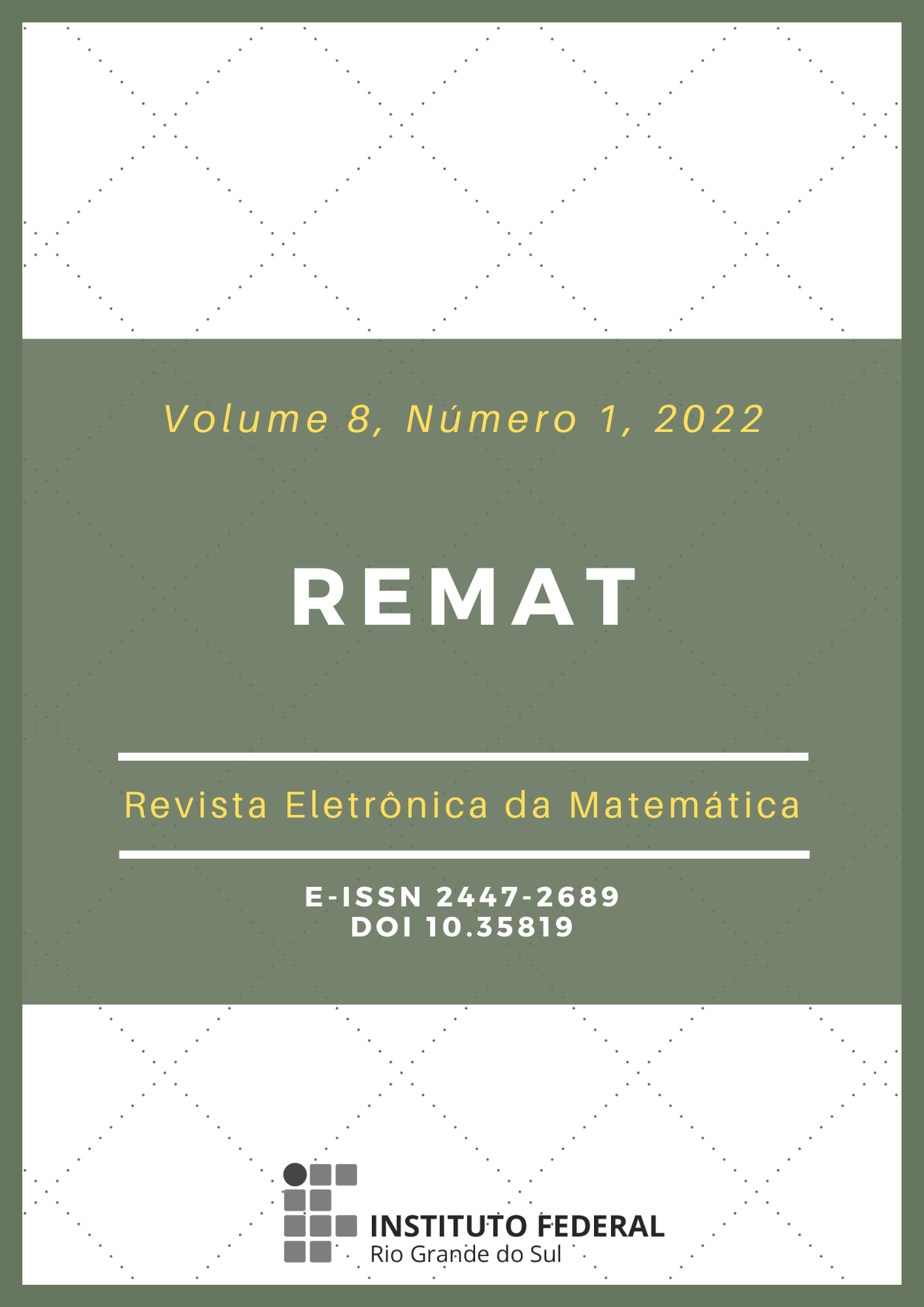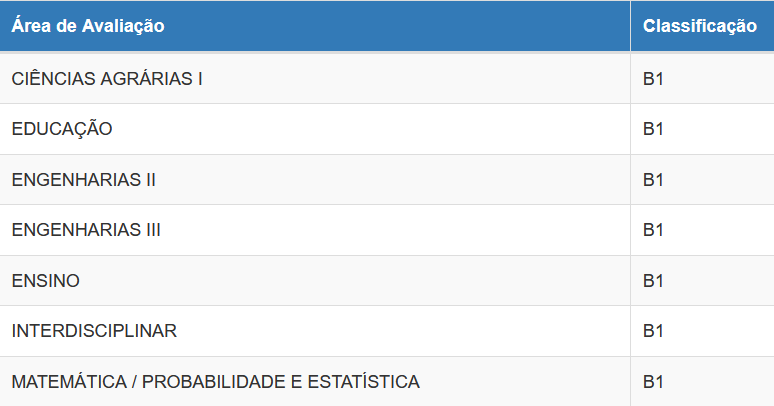Analysis of a method coloring on study of Ramsey number R(3,10)
DOI:
https://doi.org/10.35819/remat2022v8i1id4985Keywords:
Graph Theory, Bicolored Graph, Edge-coloring Graph, Ramsey Number, Residues of Degree nAbstract
Let s, t natural numbers; the Ramsey number R(s,t) is defined as the least positive integer $r$ with the property that every bicolored graph Kr contains one blue monocramatic subgraph Ks or one red monocramatic subgraph Kr. This theory gave rise to extensive research using, among other subjects, the study of combinatorics, started with Ramsey (1928). As simple as the definition is, calculating Ramsey numbers is very difficult and few are known. Exoo (1989), and Goedgebeur and Radziszowski (2013) showed that 40 <= R(3,10) <= 42. Thus, in this article, will be displayed studies and conclusions about R(3,10). We cannot yet state that the results presented in this article will be used in the final calculation of the Ramsey number R(3,10). The idea here is to share what we have studied in our research group, so that these studies can be used in the calculation of R(3,10) or to show colleagues who also study Ramsey numbers, which already we did, thus avoiding rework. Greenwood and Gleason (1955) used the notions of cubic and quadratic residues, respectively, to show that R(3,5)=14 and R(4,4)=17. Based on these ideas, given a complete graph with 41 vertices, in an isomorphic form, we will identify these vertices with the elements {0, ..., 40} of a field with 41 elements. And, with a bicoloration using residues of degree n module m (natural m, n), we will show that this graph contains a copy of blue K3 or a red copy of K10.
Downloads
References
ARAÚJO, L. R. Congruências quadráticas, reciprocidade e aplicações em sala de aula. Orientador: Bruno Henrique Carvalho Ribeiro. 2013. 64 f. Dissertação (Mestrado Profissional em Matemática em Rede Nacional) - Universidade Federal da Paraíba, João Pessoa, ago. 2013. Disponível em: https://repositorio.ufpb.br/jspui/bitstream/tede/7480/2/arquivototal.pdf. Acesso em: 28 jan. 2022.
DIESTEL, R. Graph Theory. Eletronic edition 2000. 2. ed. New York: Springer-Verlag, 2000. Disponível em: http://www.esi2.us.es/~mbilbao/pdffiles/DiestelGT.pdf. Acesso em: 28 jan. 2022.
EULER, L. Theoremata circa residua ex divisione potestatum relicta. Novi Commentarii academiae scientiarum Petropolitanae, v. 7, p. 49-82, 1761. Disponível em: https://scholarlycommons.pacific.edu/euler-works/262. Acesso em: 28 jan. 2022.
EXOO, G. On Two Classical Ramsey Numbers of the Form R(3,n). SIAM Journal on Discrete Mathematics, v. 2, n. 4, p. 488-490, 1989. DOI: https://doi.org/10.1137/0402043.
GOEDGEBEUR, J.; RADZISZOWSKI, S. P. New Computational Upper Bounds for Ramsey Numbers R(3,k). Electronic Journal of Combinatorics, v. 20, n. 1, 28 p. 20 mar. 2013. Disponível em: https://arxiv.org/abs/1210.5826. Acesso em: 28 jan. 2022.
GREENWOOD, R. E.; GLEASON, A. M. Combinatorial Relations and Chromatic Graphs. Canadian Journal of Mathematics, v. 7, p. 1-7, 1955. DOI: https://doi.org/10.4153/CJM-1955-001-4.
HARDY, G. H.; WRIGHT, E. M. An Introduction to the Theory of Numbers. 5. ed. Oxford: Oxford University Press, 1979.
RADZISZOWSKI, S. O. Small Ramsey numbers. The Eletronic Journal of Combinatorics. Dynamical survey, revision 16, 15 jan. 2021. Disponível em: https://www.combinatorics.org/files/Surveys/ds1/ds1v16-2021.pdf. Acesso em: 28 jan. 2022.
RAMSEY, F. P. On a Problem of Formal Logic. Proceedings of the London Mathematical Society, v. 2, n. 30, p. 264-286, 13 dez. 1928. DOI: https://doi.org/10.1112/plms/s2-30.1.264.
SANCHES, J. Ferramentas probabilísticas aplicadas a problemas de coloração em grafos. Orientador: Carlos Hoppen.2016. 191 f. Tese (Doutorado em Matemática Aplicada) - Universidade Federal do Rio Grande do Sul, Porto Alegre, dez. 2016. Disponível em: http://hdl.handle.net/10183/153219. Acesso em: 28 jan. 2022.
SANCHES, J. Números de Ramsey em grafos multipartidos. Orientador: Emerson Luiz do Monte Carmelo. 2013. Dissertação (Mestrado em Matemática Aplicada) - Universidade Estadual de Maringá, Maringá, 2013.
SOARES, G. A. M. J. O Teorema de Ramsey e outros resultados de combinatória que não são contagem. Orientador: Carlos Gustavo Moreira. 2014. 45 f. Tese (Mestrado Profissional em Matemática) - Instituto Nacional de Matemática Pura e Aplicada. Rio de Janeiro, 2014. Diponível em: https://impa.br/wp-content/uploads/2016/12/gustavo_adolfo_soares.pdf. Acesso em: 28 jan. 2022.
SPENCER, J. H. Ramsey's Theorem: A New Lower Bound. Journal of Combinatorial Theory, Série A, v. 18, n. 1, p. 108-115, 1975. DOI: https://doi.org/10.1016/0097-3165(75)90071-0.
Downloads
Published
How to Cite
Issue
Section
License
Copyright (c) 2022 REMAT: Revista Eletrônica da Matemática

This work is licensed under a Creative Commons Attribution 4.0 International License.
REMAT retains the copyright of published articles, having the right to first publication of the work, mention of first publication in the journal in other published media and distribution of parts or of the work as a whole in order to promote the magazine.
This is an open access journal, which means that all content is available free of charge, at no cost to the user or his institution. Users are permitted to read, download, copy, distribute, print, search or link the full texts of the articles, or use them for any other legal purpose, without requesting prior permission from the magazine or the author. This statement is in accordance with the BOAI definition of open access.

































